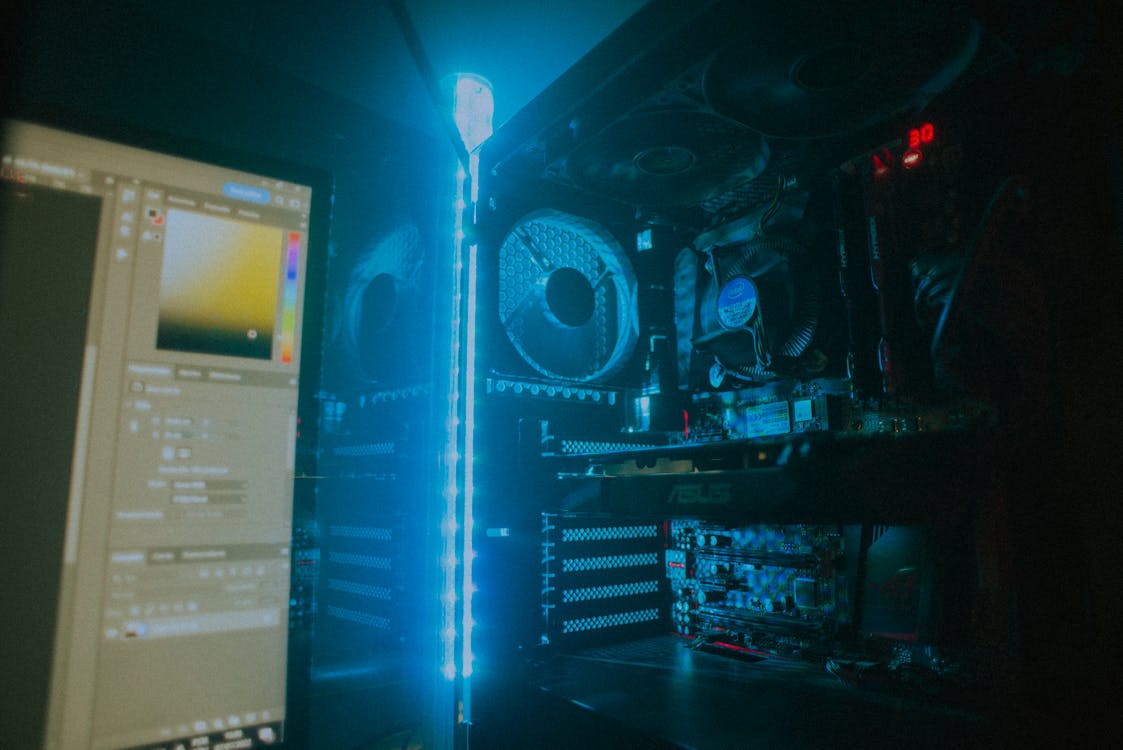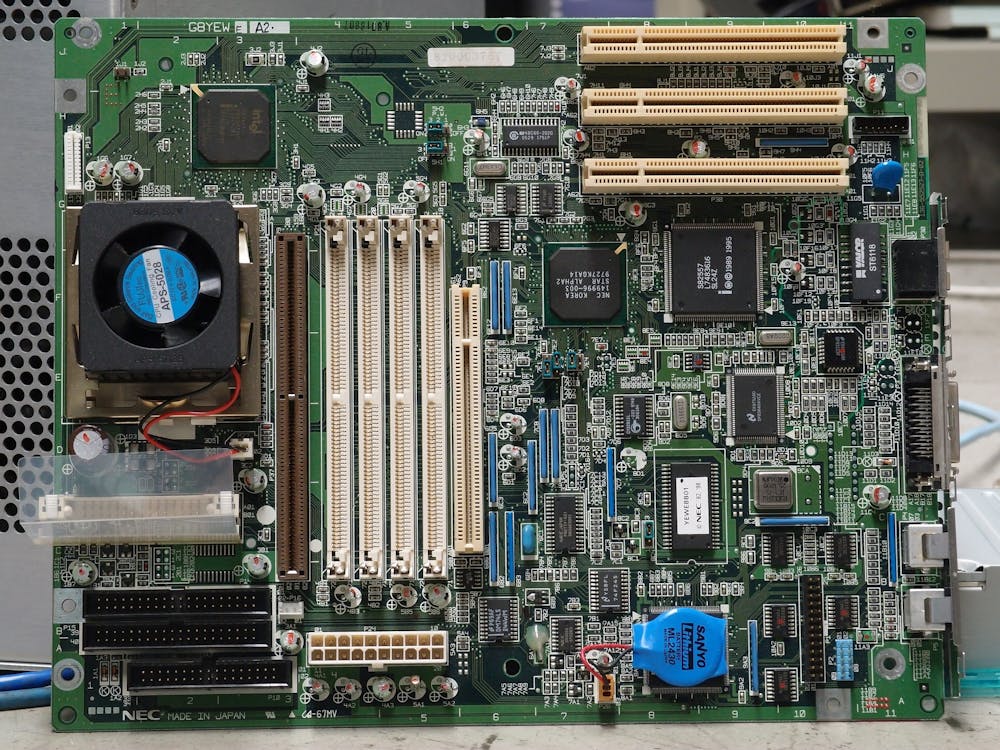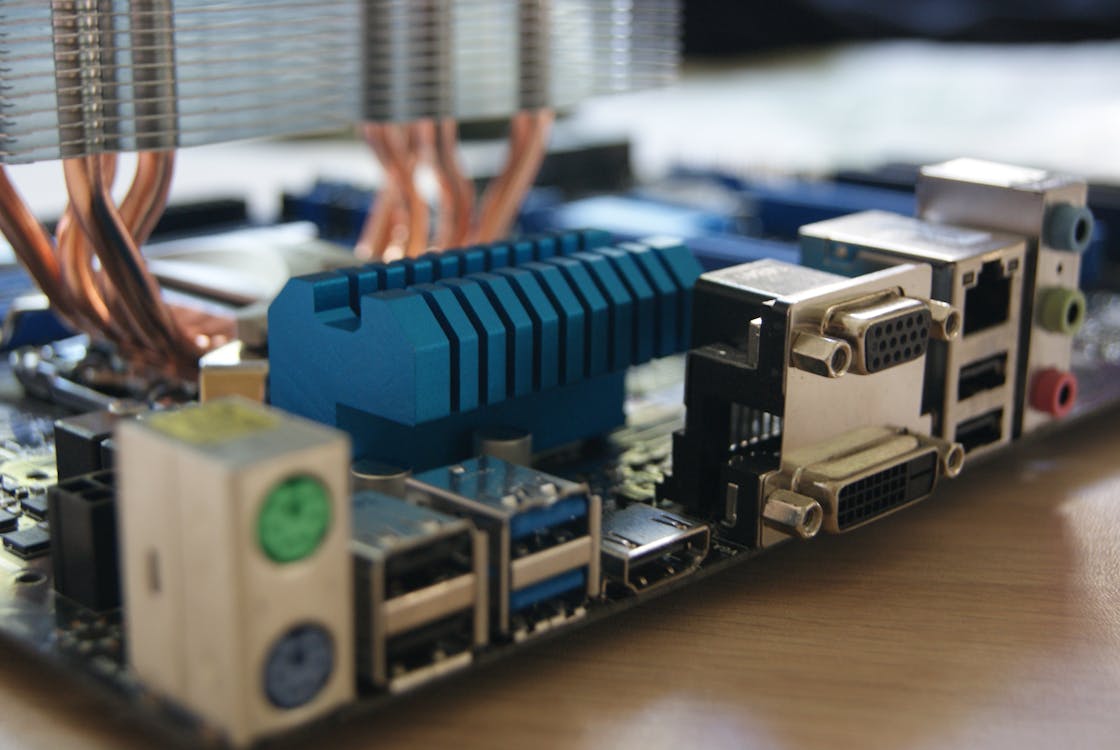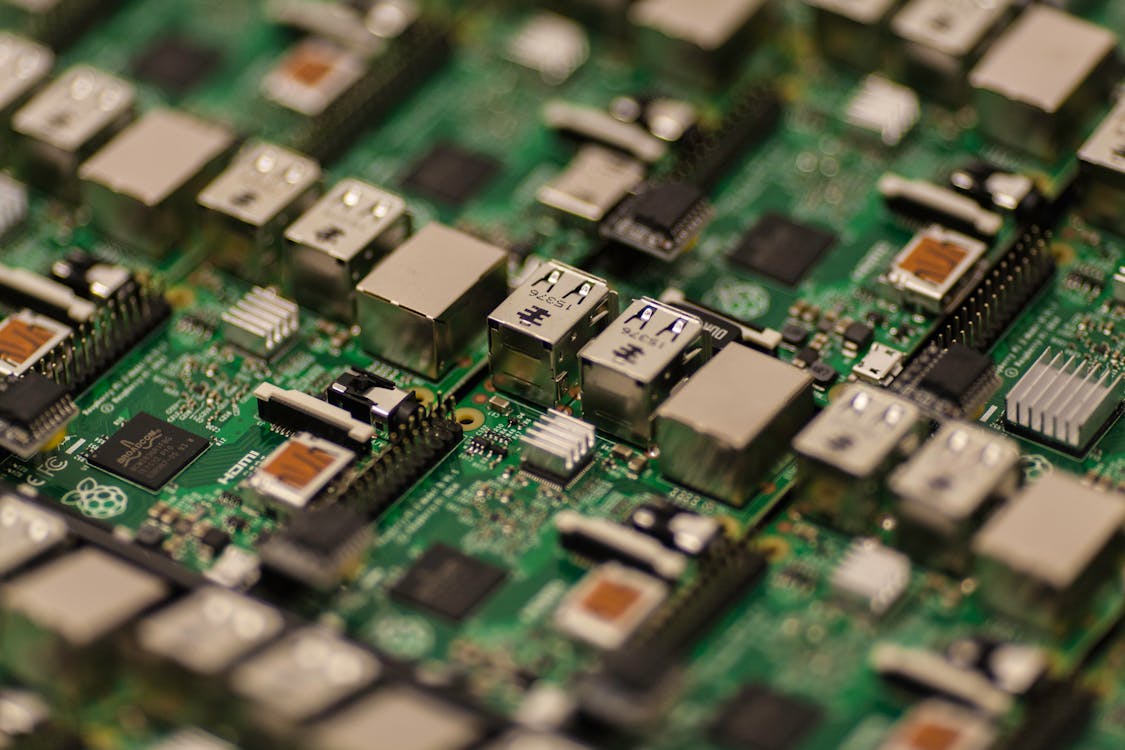Introduction to Motherboards
A motherboard is the main circuit board in a computer that houses and controls many of the key components, including the central processing unit (CPU), memory, storage devices, and peripheral interfaces. It serves as the foundation for all other hardware components and enables the communication between the different parts of a computer.
Importance
The motherboard serves as the foundation for all other hardware components and enables the communication between the different parts of a computer. It also determines the overall performance and capabilities of a computer system.
Components of a Motherboard
A. Central Processing Unit (CPU)
B. Memory (RAM)
C. Storage Devices (Hard Disk Drive, Solid
State Drive)
Storage Devices (Hard Disk Drive, Solid State
Drive): Storage devices are used to store data and programs permanently. They
can be connected to the motherboard via SATA or IDE interfaces. Hard disk
drives (HDD) have been the traditional storage option for many years, but solid-state drives (SSD) have become increasingly popular due to their speed and
reliability.
D. Peripheral Interfaces (USB, Ethernet, Audio)
Peripheral Interfaces (USB, Ethernet, Audio): Peripheral interfaces allow for the connection of external devices, such as keyboards, mice, printers, and network connections. The number and type of peripheral interfaces available on a motherboard will determine the number and type of devices that can be connected to a computer system.
E. Expansion Slots (PCI, PCIe)
Expansion Slots (PCI, PCIe): Expansion slots are used to add additional components, such as graphics cards, sound cards, and network cards, to a computer system. The number and type of expansion slots available on a motherboard will determine the number and type of components that can be added to a computer system.
Types of Motherboards
A. ATX
ATX is a form factor that is commonly
used for desktop computers. It is larger than other form factors and provides
more room for expansion options. ATX motherboards typically have 4 or more RAM
slots, multiple expansion slots, and ample room for additional components.
B. Micro-ATX
Micro-ATX is a smaller form
factor that is used for compact and budget-friendly computer systems. Micro-ATX
motherboards typically have 2 or 4 RAM slots, limited expansion options, and a
smaller footprint.
C. Mini-ITX
Mini-ITX is the smallest form
factor and is used for small-scale computer systems, such as home theater PCs
and mini-PCs. Mini-ITX motherboards have limited expansion options and
typically have 2 RAM slots.
D. BTX
BTX is a form factor that is similar to
ATX but is designed to provide better thermal management. BTX motherboards have
a different layout than ATX motherboards but offer similar expansion options.
E. ETX
ETX is a form factor that is designed
for embedded and industrial computer systems. ETX motherboards have limited
expansion options and are typically used in specialized applications.
Motherboard Features
I. Chipset
The chipset is a collection of integrated circuits on the motherboard that controls communication between the different components. The chipset determines the overall performance and capabilities of a computer system, as well as the types of processors and memory that can be used. There are several chipset types available, including Intel, AMD, and Nvidia.
II. CPU Socket
The CPU socket is the location on the motherboard where the central processing unit (CPU) is housed. The type of socket used on a motherboard will determine the type of CPU that can be used. Different CPU sockets are used by different processor manufacturers and different generations of processors, so it is important to choose a motherboard that supports the desired CPU.
III. Memory Slots
Memory slots on a motherboard are used to house the system's RAM. The number of memory slots and the type of memory supported will determine the amount and type of memory that can be used in the system. It is important to choose a motherboard that supports the desired amount and type of memory.
IV. Storage Interfaces
Storage interfaces on a motherboard are used to connect the system's storage devices, such as hard disk drives (HDD) and solid-state drives (SSD). The type and number of storage interfaces available will determine the number and type of storage devices that can be connected. SATA and M.2 are two common storage interface types.
V. Peripheral Interfaces
Peripheral interfaces on a motherboard are used to connect external devices, such as keyboards, mice, printers, and network connections. The type and number of peripheral interfaces available will determine the number and type of devices that can be connected. USB, Ethernet, and audio interfaces are common peripheral interface types.
VI. Expansion Slots
Expansion slots on a motherboard are used to add additional components, such as graphics cards, sound cards, and network cards. The type and number of expansion slots available will determine the number and type of components that can be added. PCI and PCIe are two common expansion slot types.
VII. BIOS
The BIOS (basic input/output system) is a type of firmware that controls the startup process of a computer and provides a user interface for configuring system settings. The BIOS is stored on the motherboard and is used to set up the system and control the low-level functions of the computer.
VIII. Power Management
Power management features on a motherboard are
used to control the power usage of the computer system. These features can
include support for energy-saving technologies, such as Intel SpeedStep and AMD
PowerNow, as well as the ability to control fan speeds and system voltages.
Choosing a Motherboard
Choosing a motherboard is an important step in
building a computer system as it serves as the backbone of the system and
houses key components such as the CPU, memory, storage devices, and peripheral
interfaces. When selecting a motherboard, factors such as chipsets, CPU sockets,
memory slots, storage interfaces, peripheral interfaces, expansion slots, BIOS,
and power management should be considered to determine the performance and
capabilities of the computer system. It is important to choose a motherboard
that supports the desired components and features for the desired use case










0 Comments